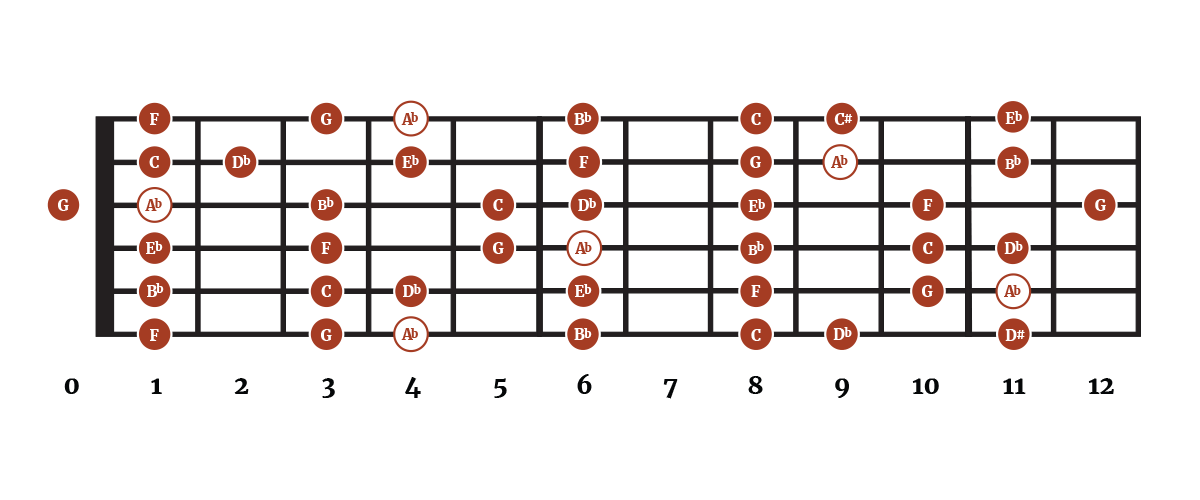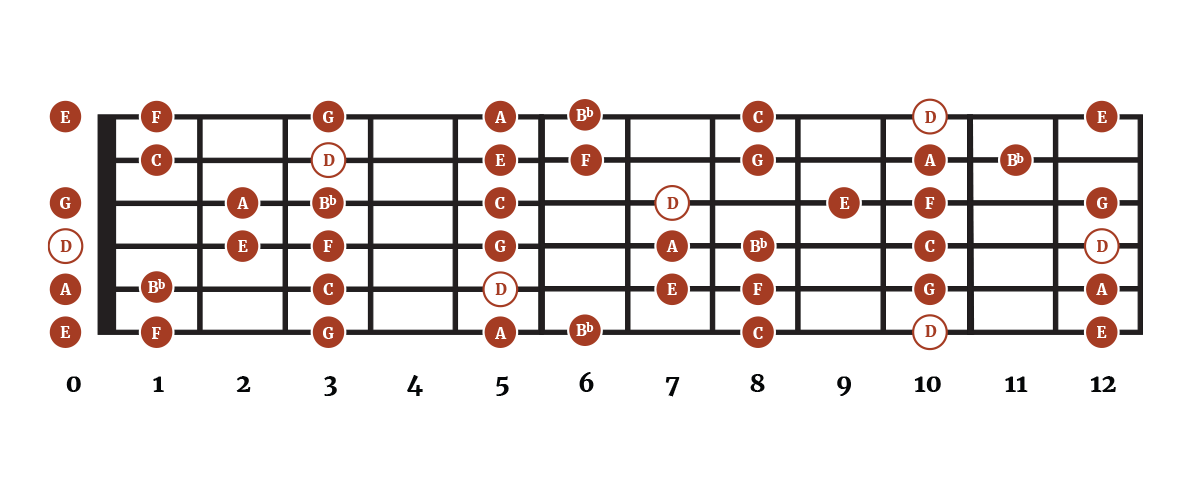The key of Bb minor contains the notes: Bb – C – Db – Eb – F – Gb – Ab

When assembled in order the notes form the Bb natural minor scale. For a quick breakdown of the key differences between the natural minor, harmonic minor, and melodic minor scales click here. For a complete rundown on musical keys in general, click here.
A# Minor or Bb Minor?
Both A# minor and Bb minor refer to the same musical key in terms of the notes played, but the choice of notation depends on the context and key signature used.
In practice, Bb minor is more common and more practical because it follows standard key signature conventions more closely. e.g. it contains five flats in its key signature (Bb, Eb, Ab, Db, and Gb), which makes it more manageable to read and write for musicians when compared to A# minor which requires the use of double sharps (A# to B# and E# to Fx) in its key signature, which is far less intuitive.
The Bb Minor Scale Step Pattern

The Bb minor scale (like all minor scales) follows the step pattern of:
whole, half, whole, whole, half, whole, whole
The Bb Minor Scale on Guitar
One way to play the Bb minor scale is to use the scale pattern shown below. Keep in mind scales can be played in many different ways.
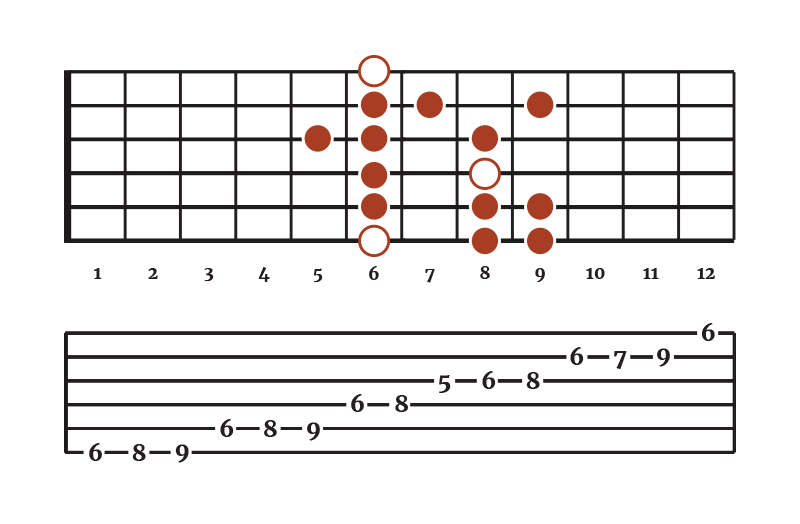
Chords In The Key Of Bb Minor
All chords within a minor key such as Bb minor follow the pattern of:
minor, diminished, Major, minor, minor, Major, Major
| min | dim | Maj | min | min | Maj | Maj |
| bb | c | Dd | eb | f | Gb | Ab |
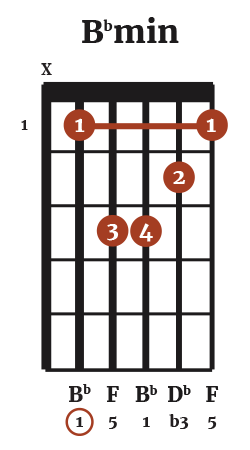
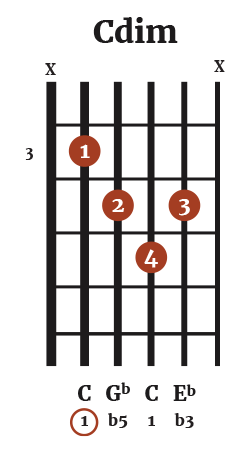
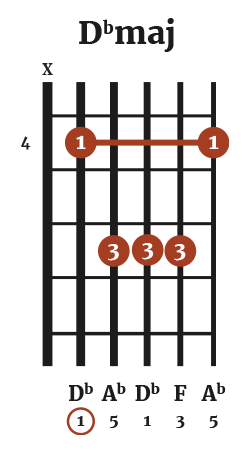
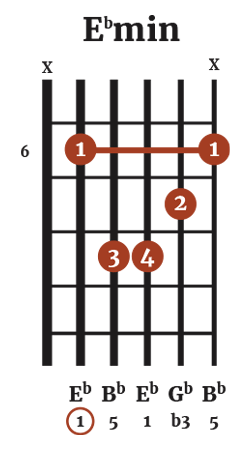
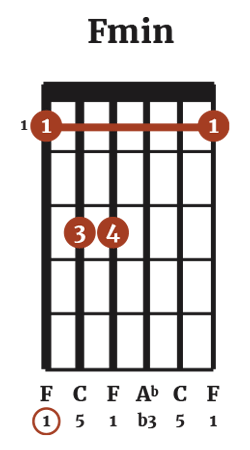
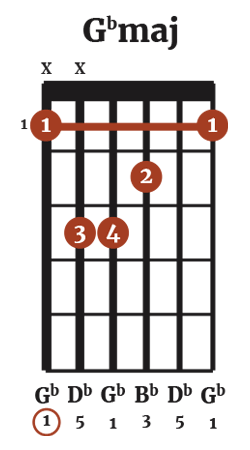
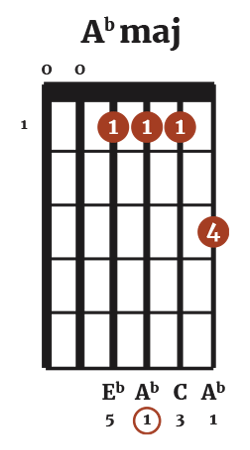
To create a minor chord, start by establishing a major chord based on the 1st, 3rd, and 5th notes of the accompanying major scale. For example, the Bb major scale gives us the notes Bb (1), D (3), and F(5).
To transform this into a minor chord, simply lower the 3rd note a half step (1 fret). This transforms the Bb major to a Bb minor chord, which is formed by the notes Bb, Db, and F.
| Chord | Notes |
| Bb minor | Bb, Db, F |
| c diminished | C, Eb, Gb |
| Db Major | Db, F, Ab |
| Eb minor | Eb, Gb, Bb |
| F minor | F, Ab, C |
| Gb Major | Gb, Bb, Db |
| Ab Major | Ab, C, Eb |
7th Chords in Bb Minor
Seventh chords are four-note chords that consist of a root note, third, fifth, and seventh scale degree. The seventh note adds complexity and color to the chord, creating a richer harmonic character. There are several types of seventh chords, each with its unique sound and function in music.
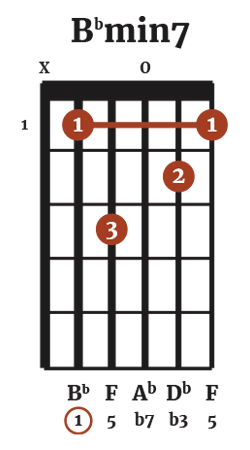
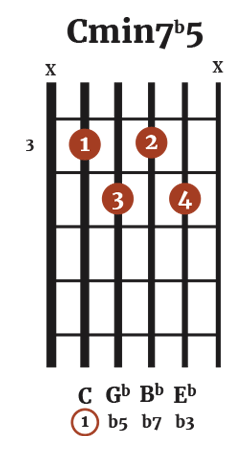
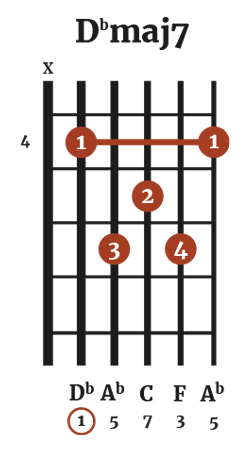
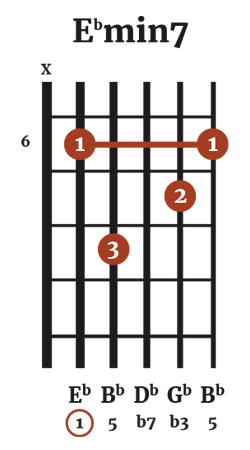
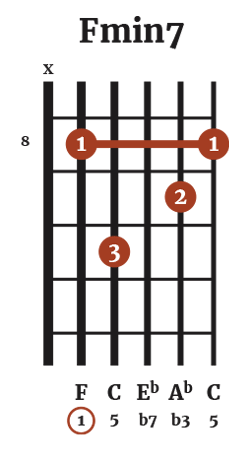
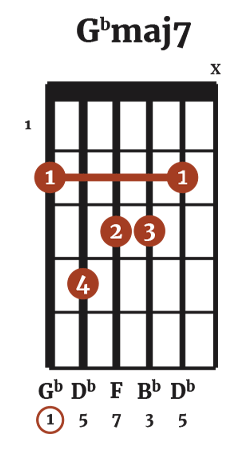
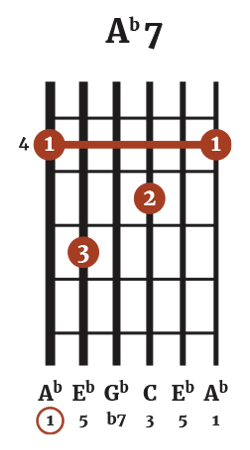
| Chord | Notes |
| bb minor 7 | Bb, Db, F, Ab |
| c minor seventh flat five | C, Eb, Gb, Bb |
| Db Major 7 | Db, F, Ab, C |
| Eb minor 7 | Eb, Gb, Bb, Db |
| F minor 7 | F, Ab, C, Eb |
| Gb Major 7 | Gb, Bb, Db, F |
| Ab Dominant 7 (G7) | Ab, C, Eb, Gb |
Chord Function
Chords play roles within keys due to the interplay between the notes that make up the chords.
| Tonic | Supertonic | Mediant | Subdominant | Dominant | Submediant | Subtonic |
| i | ii | III | iv | v | VI | VII |
| bbm | cdim | Ddmaj | ebmin | fmin | Gbmaj | Abmaj |
Understanding chord function within minor keys allows musicians to explore the nuanced emotional and harmonic possibilities of minor tonalities, from melancholy and introspection to dramatic and expressive musical landscapes.
For example, The i chord (minor tonic) serves as the central point of stability in a minor key. As it is constructed on the tonic note of the minor scale (e.g., Bbm in the key of Bb minor). This chord provides a sense of resolution in minor key compositions.
Alternatively, In the key of Bb minor, the dominant chord is Fmin and creates a strong pull toward the tonic chord, Bb major, creating a sense of resolution when the chord progression resolves back to the tonic.
Common Chord Progressions In Bb Minor
| i – VI – VII | bbmin – Gbmaj – Abmaj |
| i – VII – iv- VI | bbmin – Abmaj – ebmin – Gbmaj |
| i – v – VI – VII | bbmin – fmin – Gbmaj – Abmaj |
| i – III – VII – VI | bbmin – Dbmaj – Abmaj – Gbmaj |
| i – v – iv – VII | bbmin – fmin – ebmin – Abmaj |
Relative Major
Relative major refers to the major key that shares the same key signature as a minor key. In other words, they use the same set of notes, but their tonal centers (the tonic) are different. In the key of Bb minor, Db Major is the relative major.
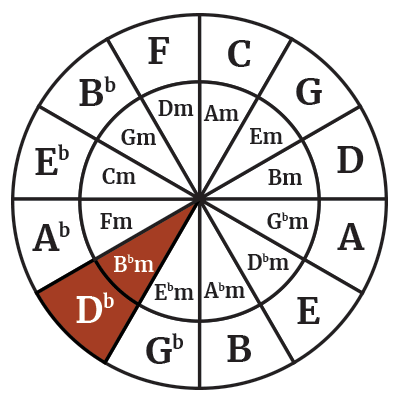
Resources
- PDF download showing the notes, scales, and chords in the key of Bb minor.
- Learn how to read chord charts
- Learn how to read guitar tab

